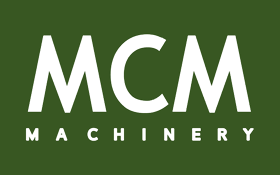- No product in the cart.
As cities worldwide grapple with the challenges of accelerating urbanization and the ensuing visitors congestion, e-bikes have emerged as a promising solution to alleviate a few of the pressures on urban transportation systems. With their blend of comfort, sustainability, and efficiency, e-bikes supply a substitute for traditional vehicles that can significantly contribute to reducing visitors congestion in cities. This article explores the role of e-bikes in mitigating urban visitors congestion, highlighting their advantages and the potential they hold for reshaping our city landscapes.
The Growing Problem of Traffic Congestion
Traffic congestion is a rising problem in urban centers, exacerbated by population development, financial development, and the increase in private vehicle ownership. Congestion not only results in lost time and productivity but in addition contributes to elevated air air pollution, noise, and frustration amongst commuters. As traditional infrastructure struggles to keep pace with the rising number of automobiles on the road, alternative solutions have develop into imperative.
Many cities have tried to address congestion through public transportation, automobilepooling, and infrastructure expansion. Nonetheless, these measures typically fall brief in meeting the dynamic wants of modern city life. In this context, e-bikes represent a transformative approach to city mobility by offering a practical and accessible alternative to vehicles and buses.
E-Bikes: A Sensible Resolution for Urban Mobility
Electric bicycles, or e-bikes, have grown in popularity attributable to their ability to offer the comfort of cycling with the added advantage of electric assistance. This assistance helps riders journey longer distances, tackle inclines more easily, and reduce physical exertion, making e-bikes an attractive option for a wide range of customers, together with those who might not typically consider cycling. E-bikes are particularly well-suited to city environments, where quick- to medium-distance journeys are widespread, and the necessity for versatile, level-to-point transportation is high.
One of the key benefits of e-bikes in reducing site visitors congestion is their measurement and maneuverability. E-bikes take up far less space on the road than cars or buses, allowing them to navigate through dense site visitors more efficiently. This advantage turns into particularly significant in congested areas, the place vehicles typically come to a standstill. Additionally, e-bikes can make use of dedicated bike lanes, additional reducing the demand for road space and serving to to ease site visitors bottlenecks.
The Environmental Impact of E-Bikes
Beyond their ability to reduce congestion, e-bikes additionally offer significant environmental benefits. Traditional cars, especially these powered by inner combustion engines, are a major source of greenhouse gas emissions and air pollution. By contrast, e-bikes produce no direct emissions and require far less energy to operate than cars, even electric vehicles. This makes e-bikes a key element in efforts to reduce the carbon footprint of city transportation.
The environmental benefits of e-bikes extend beyond emissions. E-bikes also contribute to the reduction of noise pollution, which is a significant issue in congested urban areas. The quiet operation of e-bikes makes them a more pleasant and less disruptive option for each riders and pedestrians.
E-Bikes and Public Transportation Integration
E-bikes have the potential to complement and enhance existing public transportation systems. In many cities, e-bikes are being integrated into “last-mile” options, where commuters use e-bikes to journey from transit hubs to their last destinations. This can reduce the reliance on private vehicles for brief trips and ease pressure on overcrowded public transportation systems.
Many cities are additionally adopting bike-sharing programs that include e-bikes, allowing residents and visitors to rent e-bikes for brief trips. These programs assist reduce automobile dependency, encourage active transportation, and supply a convenient, affordable various to taxis or rideshare services.
The combination of e-bikes with public transportation networks can be additional enhanced by infrastructure investments, such as the development of safe and accessible bike lanes, bike parking facilities, and charging stations. These measures assist create a more conducive environment for e-bike use and encourage more folks to addecide them as a regular mode of transportation.
Overcoming Limitations to E-Bike Adoption
While e-bikes supply numerous benefits, there are challenges that should be addressed to maximise their impact on reducing visitors congestion. Value remains a barrier for some potential customers, as e-bikes could be more costly than traditional bicycles. Nevertheless, as technology improves and production scales up, costs are likely to decrease, making e-bikes more accessible.
Safety considerations additionally deter some folks from adopting e-bikes. Cyclists in urban environments usually face hazards reminiscent of site visitors, poorly designed bike lanes, and a lack of awareness among drivers. Addressing these considerations through infrastructure improvements and public awareness campaigns will be crucial to encouraging wider e-bike adoption.
The Future of E-Bikes in City Mobility
As cities proceed to grow and the challenges of site visitors congestion and environmental sustainability change into more pressing, e-bikes are likely to play an increasingly necessary position in urban mobility. By providing a versatile, efficient, and environmentally friendly alternative to traditional vehicles, e-bikes have the potential to transform the way we move through cities.
To completely realize the potential of e-bikes, cities must invest within the mandatory infrastructure, policies, and programs to assist their use. This includes expanding bike lanes, offering incentives for e-bike purchases, and promoting e-bike sharing schemes. With the appropriate assist, e-bikes can turn into a cornerstone of sustainable city transportation, helping to reduce site visitors congestion, lower emissions, and create more livable cities for everyone.
If you beloved this article and you also would like to receive more info about zwoltek01 nicely visit our web site.

